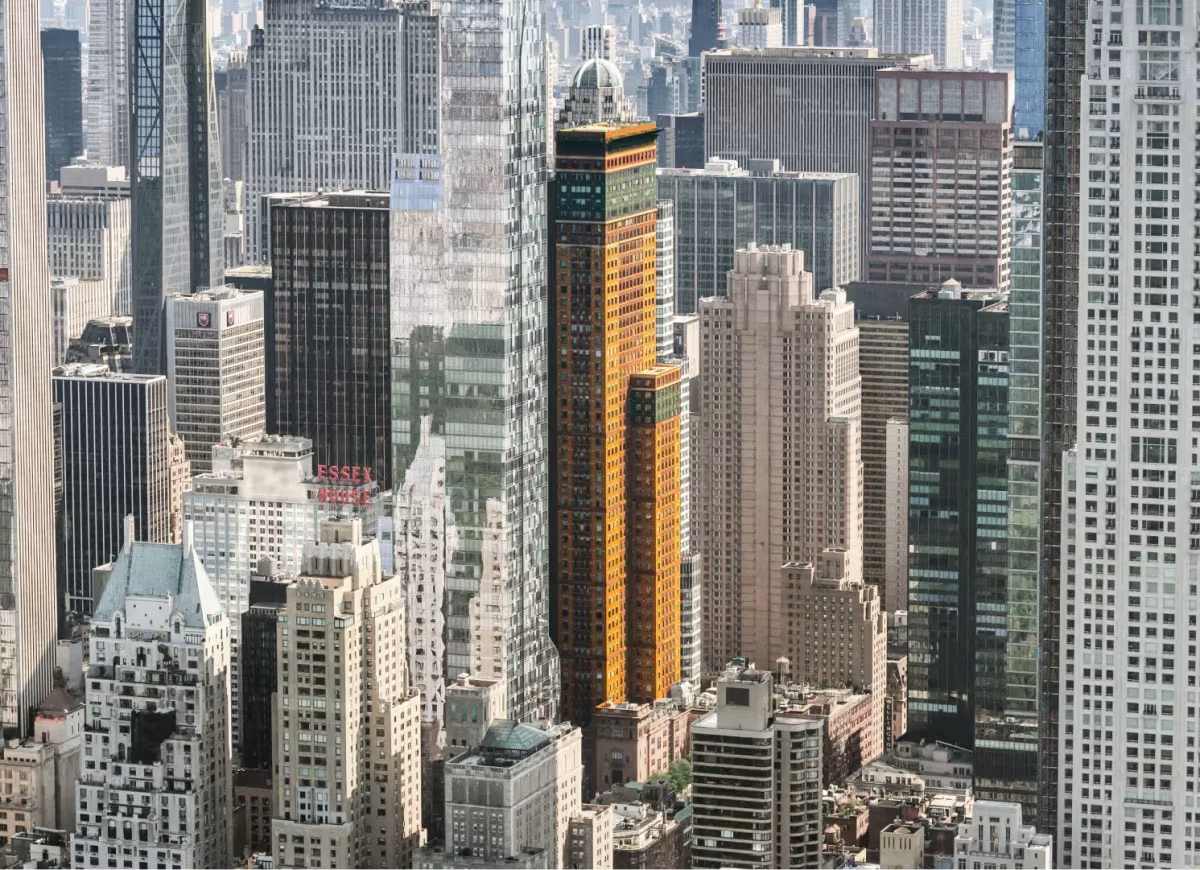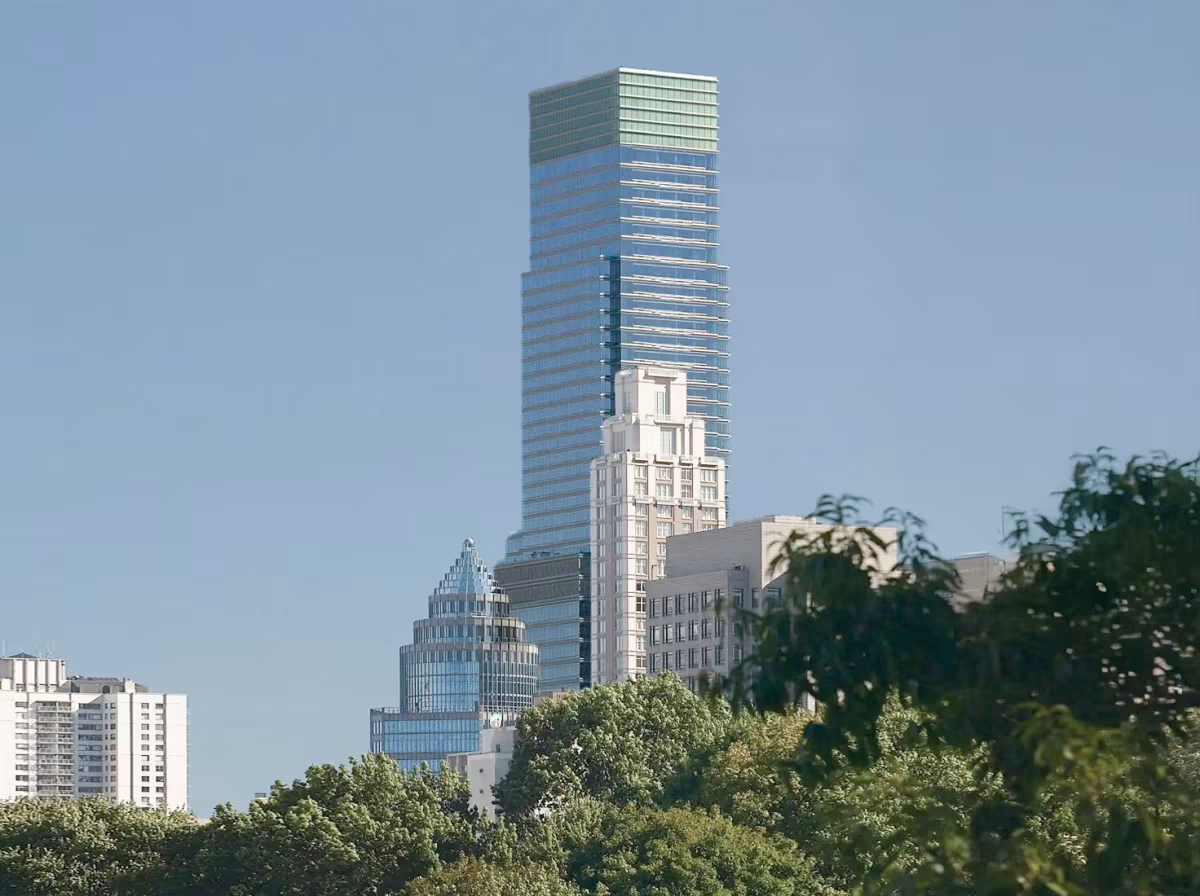Carnegie Hall Tower vs 731 Lexington Avenue Building


Comparing the Carnegie Hall Tower and the 731 Lexington Avenue Building is particularly interesting because they share the same skyline in New York, NY, and were both designed by César Pelli & Associates. However, they were completed more than 14 years apart.
This offers a unique perspective on how the architect's style and the city's architecture evolved over time.
Height & Size
These two towers present an interesting contrast in their proportions. The 731 Lexington Avenue Building rises higher at 814ft (248m), while the Carnegie Hall Tower reaches 758ft (231m). However, the Carnegie Hall Tower accommodates more floors with 60 levels above ground, compared to 54 floors in the 731 Lexington Avenue Building.
This suggests different approaches to interior space design. The 731 Lexington Avenue Building has an average floor-to-floor height of approximately 4.6m, while the Carnegie Hall Tower has more compact floors averaging around 3.9m each. The taller building's more generous floor heights might indicate grander interior spaces, higher ceilings, or different programmatic requirements.
These different proportions likely reflect the specific needs each building was designed to serve, whether driven by zoning regulations, client requirements, or the intended use of the spaces within. The contrast shows how architects can achieve different spatial experiences even when working with similar overall building scales.
Architectural Style
The Carnegie Hall Tower was designed in the Postmodernism style, while the 731 Lexington Avenue Building reflects the principles of Contemporary.
The Carnegie Hall Tower represents a late expression of the Postmodernism, a style already in decline in 1991 when it was completed. By contrast, the 731 Lexington Avenue Building followed the then mainstream Contemporary, embodying the dominant architectural direction of its time.
Uses
The 731 Lexington Avenue Building follows a mixed-use model, combining residential, retail and commercial. In contrast, the Carnegie Hall Tower has remained primarily commercial.
The 731 Lexington Avenue Building offers 105 residential units.
Structure & Facade
The two buildings opted for different structural and facade solutions.
The Carnegie Hall Tower uses a Framed Tube In Tube system, which combines a strong central core with a perimeter tube of columns, while the 731 Lexington Avenue Building uses a Frame system, that relies on a regular grid of columns and beams to sustain its weight.
And when it came to the facade, the Masonry went with a Masonry facade, which features a heavy masonry skin that gives it a more clasical look, while the 731 Lexington Avenue Building opted for a Curtain Wall facade, that uses a lightweight glass curtain wall hung from the structure.
| Carnegie Hall Tower | 731 Lexington Avenue Building | |
|---|---|---|
| César Pelli & Associates | Architect | César Pelli & Associates |
| 1987 | Design Ended | 2001 |
| 1988 | Construction Started | 2001 |
| 1991 | Year Completed | 2005 |
| Postmodernism | Architectural Style | Contemporary |
| Commercial | Current Use | Mixed |
| 60 | Floors Above Ground | 54 |
| 231 m | Height (m) | 248 m |
| 49000 | Built-up Area (m²) | 130000 |
| 12 | Number of Elevators | 29 |
| Framed Tube In Tube | Structure Type | Frame |
| Reinforced Concrete | Vertical Structure Material | Steel And Concrete |
| Reinforced Concrete | Horizontal Structure Material | Poured Concrete Over Metal Decking |
| Yes | Facade Structural? | No |
| Brick, Glass | Main Facade Material | Glass, Steel |
| HRH Construction | Main Contractor | Bovis Lend Lease Ltd. |
| Rockrose Development Corp | Developer | Vornado Realty Trust |
| Cosentini Associates | MEP Engineer | Flack + Kurz |
| Rosenwasser/Grossman Consulting Engineers | Structural Engineer | Thornton Tomasetti |
| NY | State | NY |
| New York | City | New York |
| 152 West 57th Street | Address | 731 Lexington Avenue |